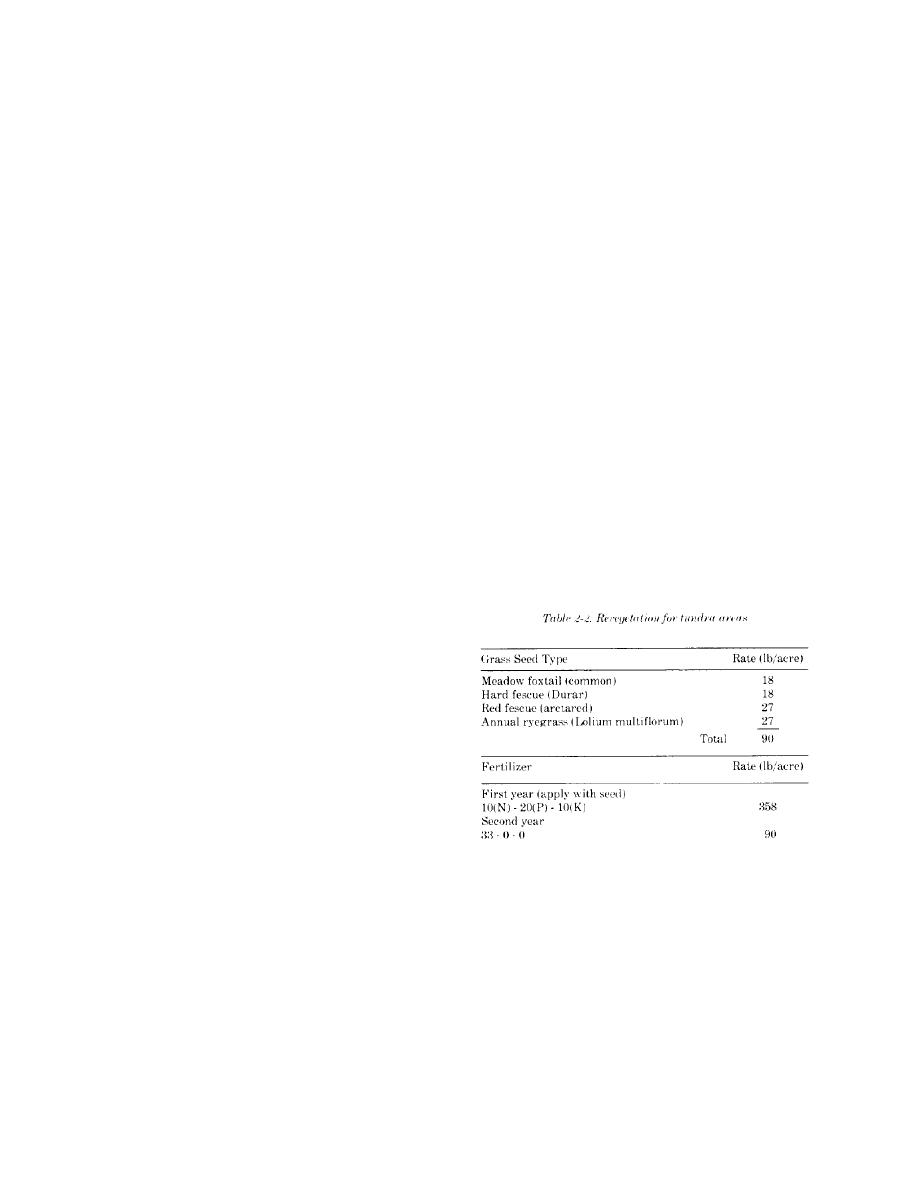
TM 5-852-5/AFR 88-19, Volume 5
installed as individual units or combined with other
Standby units for critical equipment are essential
utility services in a utilidor. Above-ground utilidor
and are particularly important for emergency power
systems offer easier access for maintenance and
and for heating systems. Humidity is a critical factor
repair, and are cheaper to build where site condi-
in enclosed spaces and both high and low extremes
tions are poor. However, there are disadvantages.
can be experienced in arctic situations. Since natural
Above-ground units are exposed to extreme winter
humidity is extremely low due to the low winter
conditions and must have additional thermal pro-
temperatures, humidifiers (to maintain humidity at
tection (see chapter 12) as compared to a buried
about 30 percent) may be desirable in personnel
system. Above-ground systems are susceptible to
spaces. Very high humidity is experienced in pump
vandalism and traffic damage, they disrupt pedes-
stations and enclosed treatment works, and thus
trian and vehicle traffic patterns, and create snow
condensation may occur on cold surfaces causing
removal problems. In general, below-ground instal-
damage and inconvenience.
lation will be adopted wherever possible. In the
2-4. Revegetation.
Subarctic, an unfrozen zone may exist between the
maximum seasonal frost penetration and the top of
Areas excavated and backfilled for utility systems
the permafrost. This condition can also exist in the
must be revegetated to prevent erosion. A revegeta-
Arctic near lakes and rivers, and on slopes with
tion procedure is summarized in table 2-2 for tundra
southern exposure. Pipes buried in permafrost or in
areas. These grasses will die out in four to five years
the seasonal frost zone must not only be protected
but the natural vegetation will have developed by
from freezing but must also resist the structural
that time. The initial seeding and fertilization will
effects of heaving in the seasonal frost zone or
take place after the ice breaks up on local streams
thawing of permafrost. The terrain is relatively flat
but before mid-summer. As indicated in table 2-2, a
in much of the Arctic, and maintenance of the neces-
nitrogen-phosphorus-potassium (N, P, K) fertilizer
sary grades for gravity sewers in either the above-
will be applied with the initial seeding and then
ground or buried mode is difficult. Small pump
supplemental nitrogen at the beginning of the
stations, or pressure or vacuum sewer systems must
second growing season.
be used to overcome these constraints.
b. Network layout. A compact installation layout
will make a central heating plant practical. This will
reduce costs and energy consumption and also
reduce the risk of fire. Service lines from utility
mains to individual buildings are the main source of
freezing problems. Buildings will be as close to the
mains as possible with service lines 60 feet or less in
length. It is typical practice in temperate climates to
bury most utility lines in the streets. However, there
are thermal disadvantages to this practice in cold
regions since clearing the roads of snow will allow
greater frost penetration. Burying water and sewer
mains in the front or back yards of dwellings, and in
open areas where snow will not be removed, will
maintain warmer ground and pipe temperatures.
Installation layouts should not be designed with
dead-end streets. Dead-ends are difficult and
expensive to service with circulating water systems
and snow removal is more difficult. The largest
consumers of water will be located at the extremi-
ties of the distribution system, if possible.
2-3. Equipment.
For remote arctic installations the initial cost of
most utility equipment is not as important as its
reliability. A large inventory of critical spare parts is
recommended and standardization of equipment to
reduce the parts inventory will prove economical.
2-2



 Previous Page
Previous Page
